Aelia Augusta Italica is a Roman town built for veterans of Scipio's campaigns, situated at Santiponce near Seville. It is a 'must see' for anybody interested in the Romans in Andalucia.
By Nick Nutter | Updated 26 Jun 2024 | Seville | Places To Go |
Login to add to YOUR Favourites or Read Later
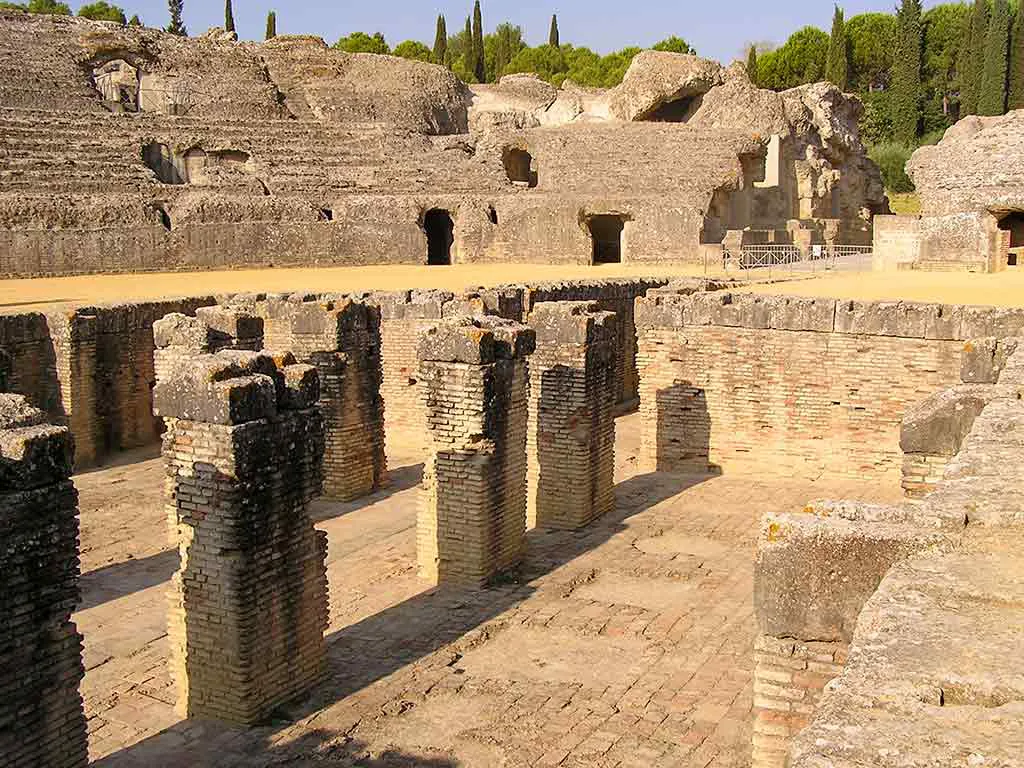
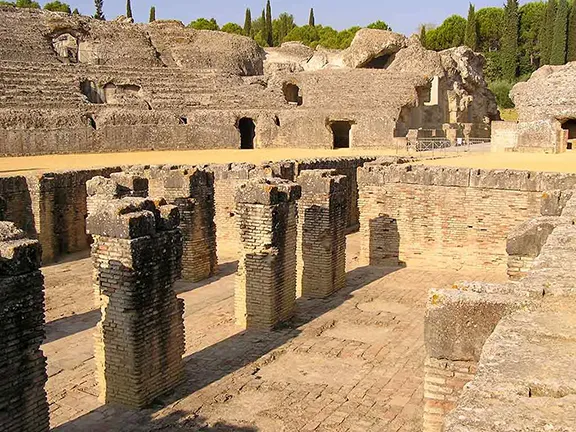
Amphitheatre at Colonia Aelia Augusta Italica
In 53 AD, a mixed Iberian Roman family gave birth to a child who would become a soldier emperor presiding over the greatest military expansion of territory in Roman history – Trajan. In 76 AD, another family of mixed blood gave birth to the emperor that would succeed Trajan and become almost as famous - Hadrian.
Both Hadrian and Trajan have the distinction of being born of provincial families outside of Italy in a Roman town built for army veterans that would become known as Aelia Augusta Italica.
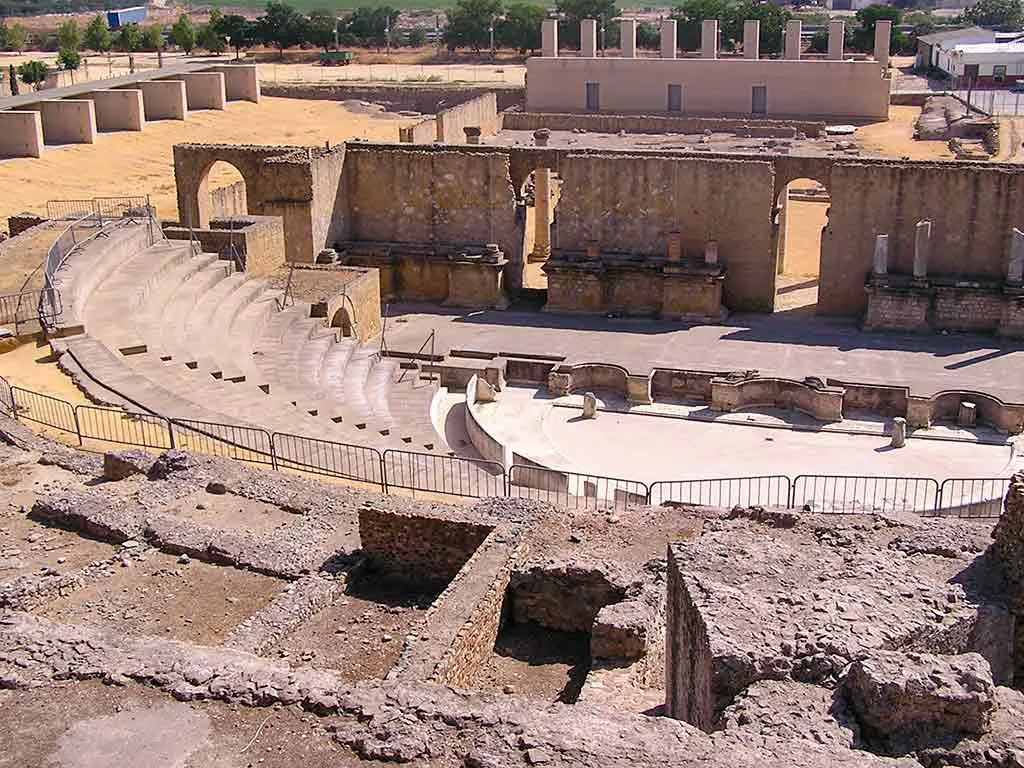
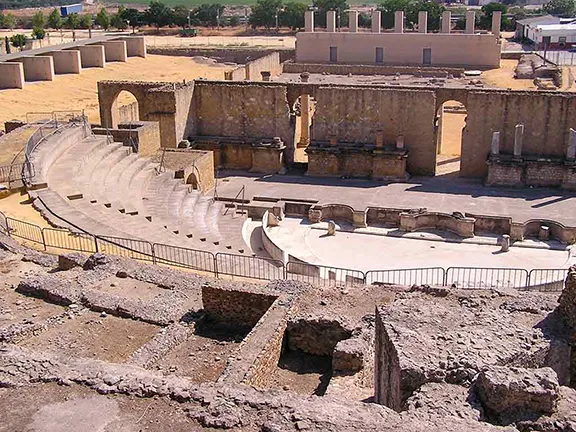
Roman Theatre Santiponce
Santiponce, a small town of perhaps 8,000 people, sits on a small hill some 9 kilometres northwest of Seville. It is evident that at one time the Rio Guadalquivir flowed below the hill but then found a new course further south.
The town appears to have no great significance having been left behind by both the river and time. But it was not always so. A small Iberian settlement existed there when the Romans first arrived in Andalucia in 208 BC.
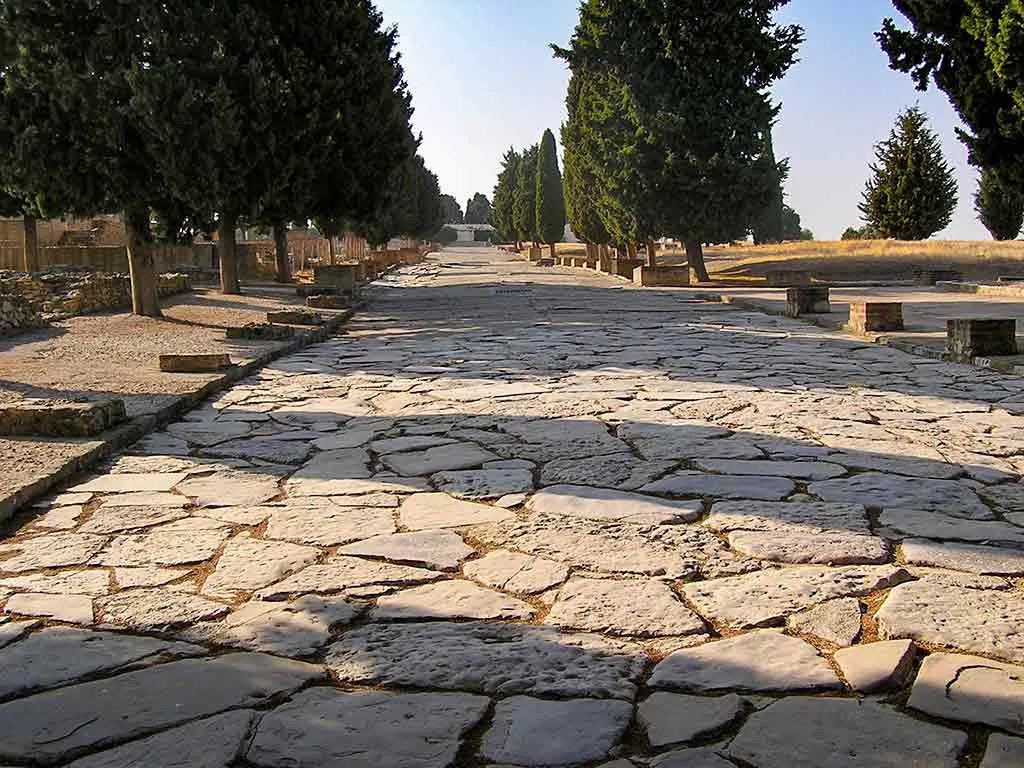
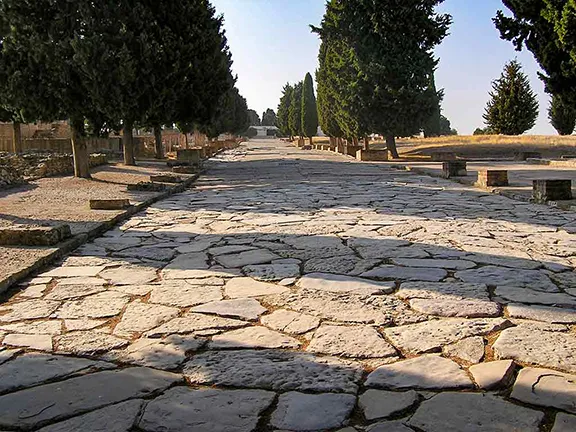
Amphitheatre Italica
The Roman General Publius Cornelius Scipio and his men had landed in Carthago Nova (Cartagena) in 210 BC to deal with the Carthagenians during the Second Punic War. He took the city and then fought a series of major actions and numerous skirmishes as he fought his way through Carthaginian held territory; at Baecula (Bailen in Jaen Province) Ilipa (Alcala del Rio in Seville Province) and Gades (Cadiz).
By 206 BC Scipio had driven the Carthaginians from southern Spain. He needed somewhere to house his veterans and a strategic position from which to control the area. The small settlement that is now Santiponce was ideal.
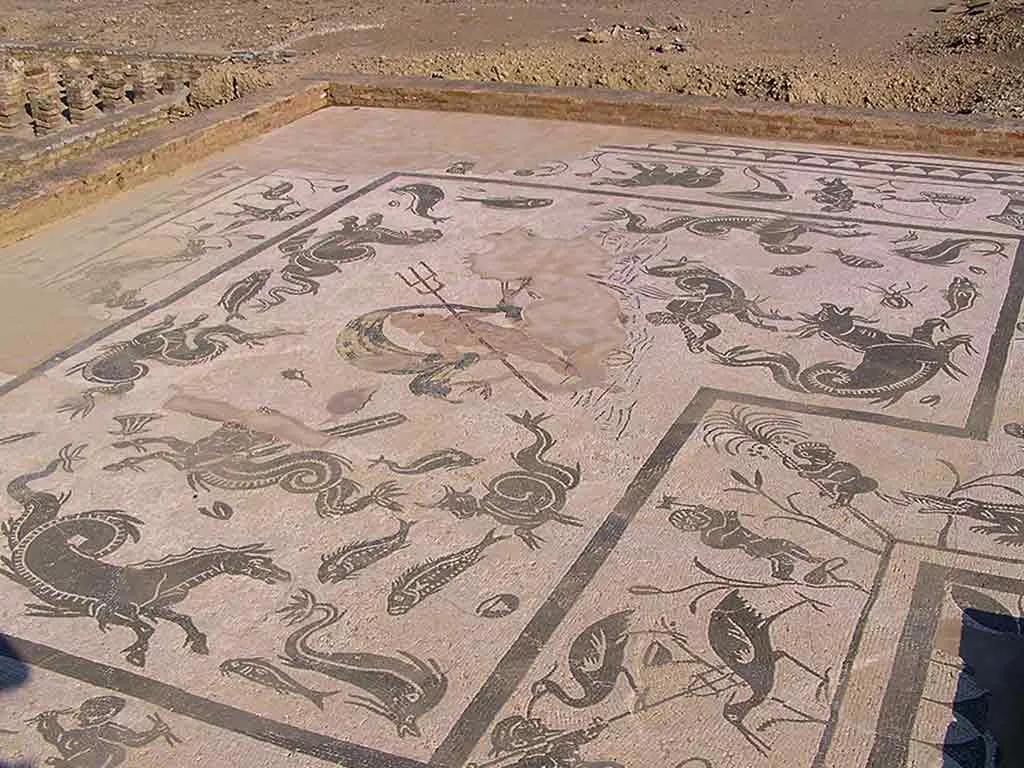
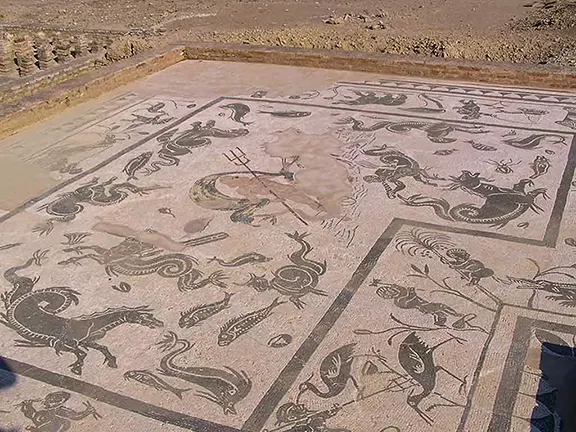
African Scene Mosaic Italica
The Romans called their new city Italica and it was built in two parts.
The general housing and a theatre were built on the site of the present town, extending the existing Iberian settlement. Apart from the theatre, this section is hidden beneath the town.
It was during the Roman Empire period that Italica suddenly blossomed.
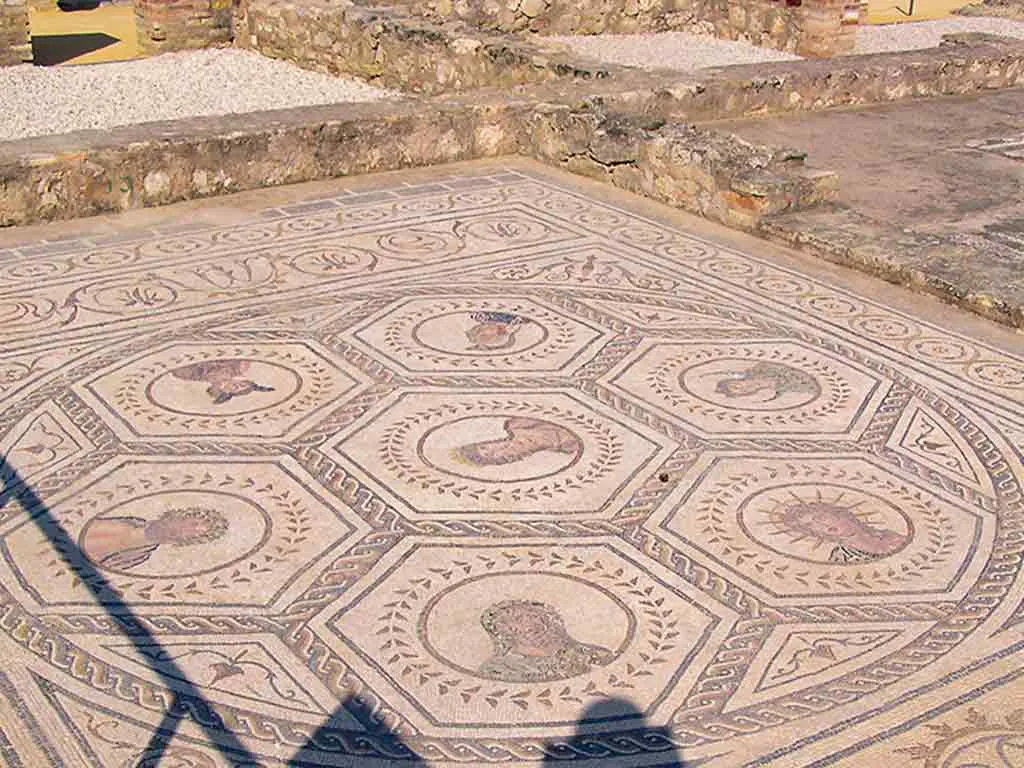
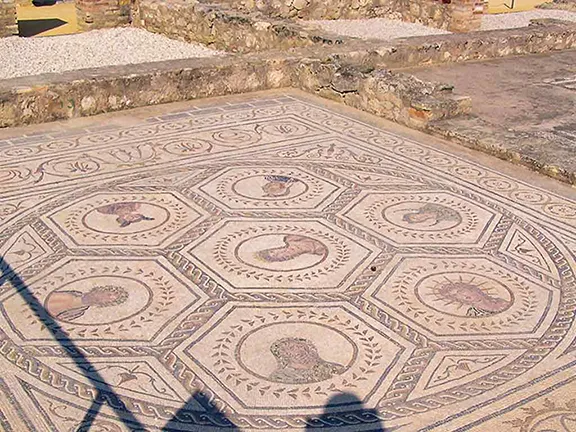
Mosaic of the Planets Italica
It was Hadrian who reigned from 117 AD to 138 AD that decided to expand Italica.
He built sumptuous villas with wonderful mosaic floors, temples, including a Trajaneum commemorating his predecessor Trajan, and an amphitheatre that would seat 25,000 people, the third-largest in the Empire. The amphitheatre was much larger than that required to seat the local population, half the size of the Colosseum in Rome, and was used for spectaculars that attracted audiences from far afield. Such shows were sponsored by the rich citizens of ‘urbs nova’ or new city, of Italica as they demonstrated their wealth and importance.
Italica was promoted from the status of Municipium to Colonia and took the name Colonia Aelia Augusta Italica.
This period of conspicuous expenditure did benefit one particular section of the community, the mosaic artists, as property owners vied with each other to have the most extravagant mosaic floor.
Amongst the mosaics still in place, is one virtually complete. The ‘Mosaic of the Planets’ It depicts the goddess Venus surrounded by her acolytes, Jupiter, Mercurio, Marte, Selene, Helios (with the halo) and Saturno. (In those days it was believed the Sun circled the Earth hence its position on the perimeter).
However, Colonia Aelia Augusta Italica was never completed. It was literally and politically, built on shifting sand.
The foundations and substrata could not support the massive columns built on them and the political situation in the Empire started to worsen following the Antonine Plague of 165 – 185 AD. The 200 year period following the plague was a time for which the historian Gibbon coined the phrase ‘The Decline and Fall of the Roman Empire.’
Italica declined in parallel with the Empire, a process exacerbated by the Guadalquivir river having moved its courses away from the town.
The city of Hispalis, Seville, gained ascendancy. During Mediaeval times. much of the building stone was reused locally and once again Italica became a small town on a hill nine kilometres northwest of Seville.
From being the birthplace of Roman Emperors, Italica recently gained prominence as a filming location for 'Game of Thrones.'
Here are the must-see places in Italica:
Located just 9km from Seville, Italica is a perfect to visit as a day trip.
Italica is easily accessible from Seville. You can take Bus No. 170A from the Plaza de Armas bus station in Seville, which drops you directly in Santiponce near the entrance to the archaeological site. The journey typically takes around 20-30 minutes. Alternatively, driving or taking a taxi is a quick option, with ample parking available near the site.
Italica is open from Tuesday to Sunday. It usually opens at 9:00 AM, but closing times can vary by season, so it’s recommended to check their official website before you go. There is a small fee for entry, but access is free for EU citizens on Sundays. The site often offers free entry late in the day, approximately an hour before closing.
For an easy, stress-free way to see Italica from Seville, consider booking a day tour that includes transportation and a guided tour of the site. The tour begins at 10.00am and takes 4 hours, which allows you to enjoy the afternoon and evening in Seville.
Check the availability for your visit date below.
Travelling to/around Spain and need some help? Here are our favourite travel resources.
We usually use Booking.com to look for hotels or apartment rentals. Lots of choice & you can unlock more discounts with their Genius loyalty programme!
To research transportation options around Spain, we like using Omio. It’s an easy way to compare different modes of transport and prices in one place. To search train routes, schedules, and prices, we recommend using Trainline.
Renting a car gives you the ultimate freedom to explore Andalucia at your own pace. Click here to compare car rental prices. (You’ll be surprised at how affordable it is in Spain!)
For last-minute holiday deals, check out Expedia UK.
Looking for things to do? Viator has a huge catalog of activities and tours across many cities in Spain. We also love Get Your Guide!
Guruwalk is our favourite platform to find the best free walking tours in a city.
For money transfers or spending overseas in foreign currency, Wise is our favorite borderless banking service (we love their debit card that's without fees!).
Travel insurance is a must to protect against emergencies and unexpected incidents. Get a quote from SafetyWing here.
For an easy way to stay connected on the road, get an eSim from Airalo. It's affordable and, best of all, you'll be connected the moment you arrive!
For opening times of Italica, click here